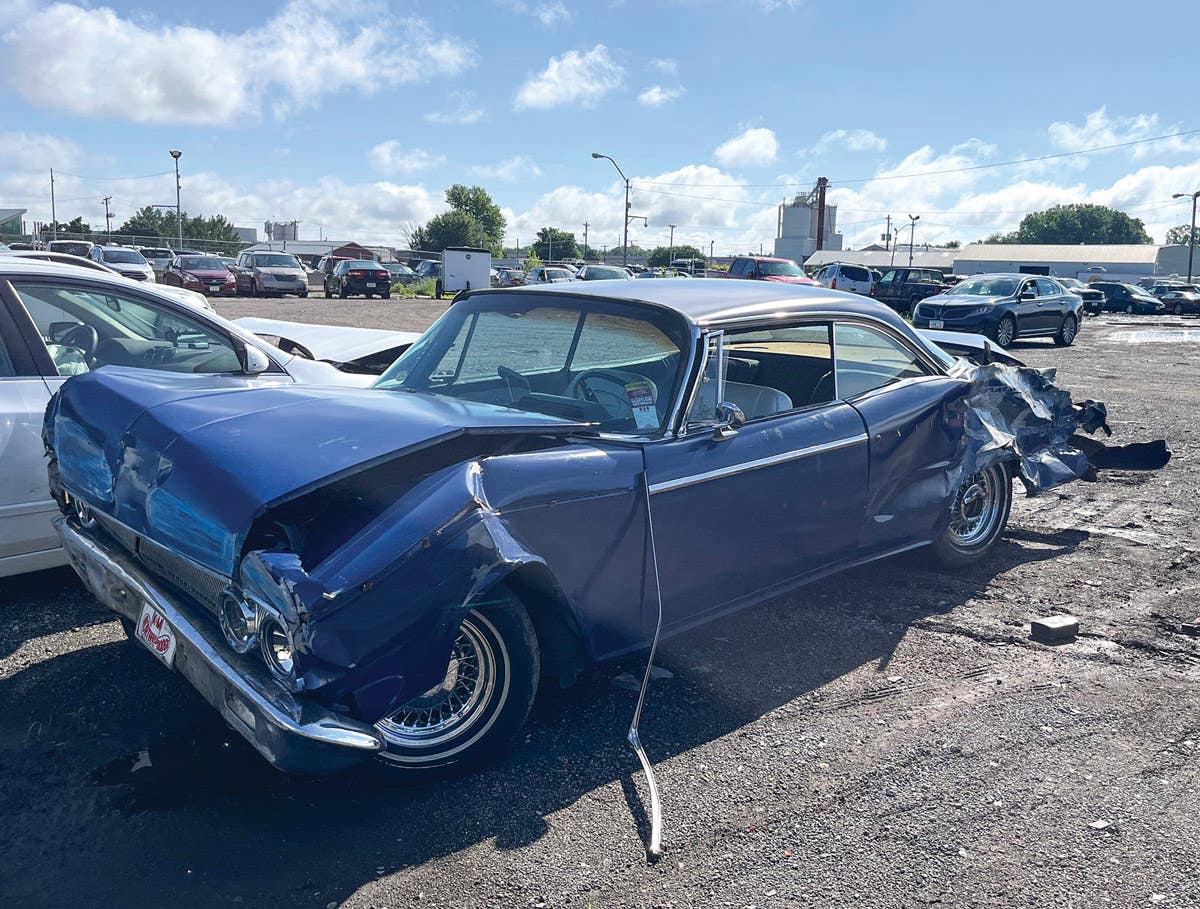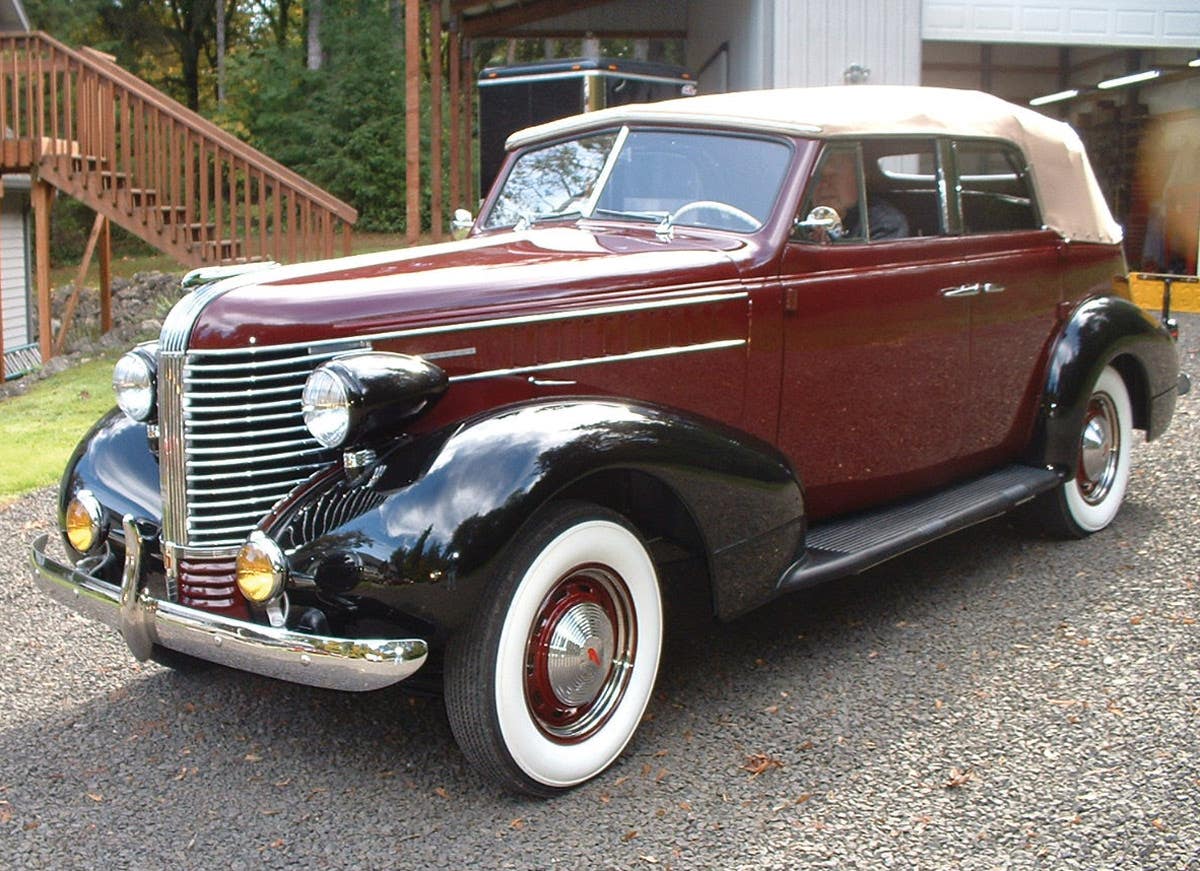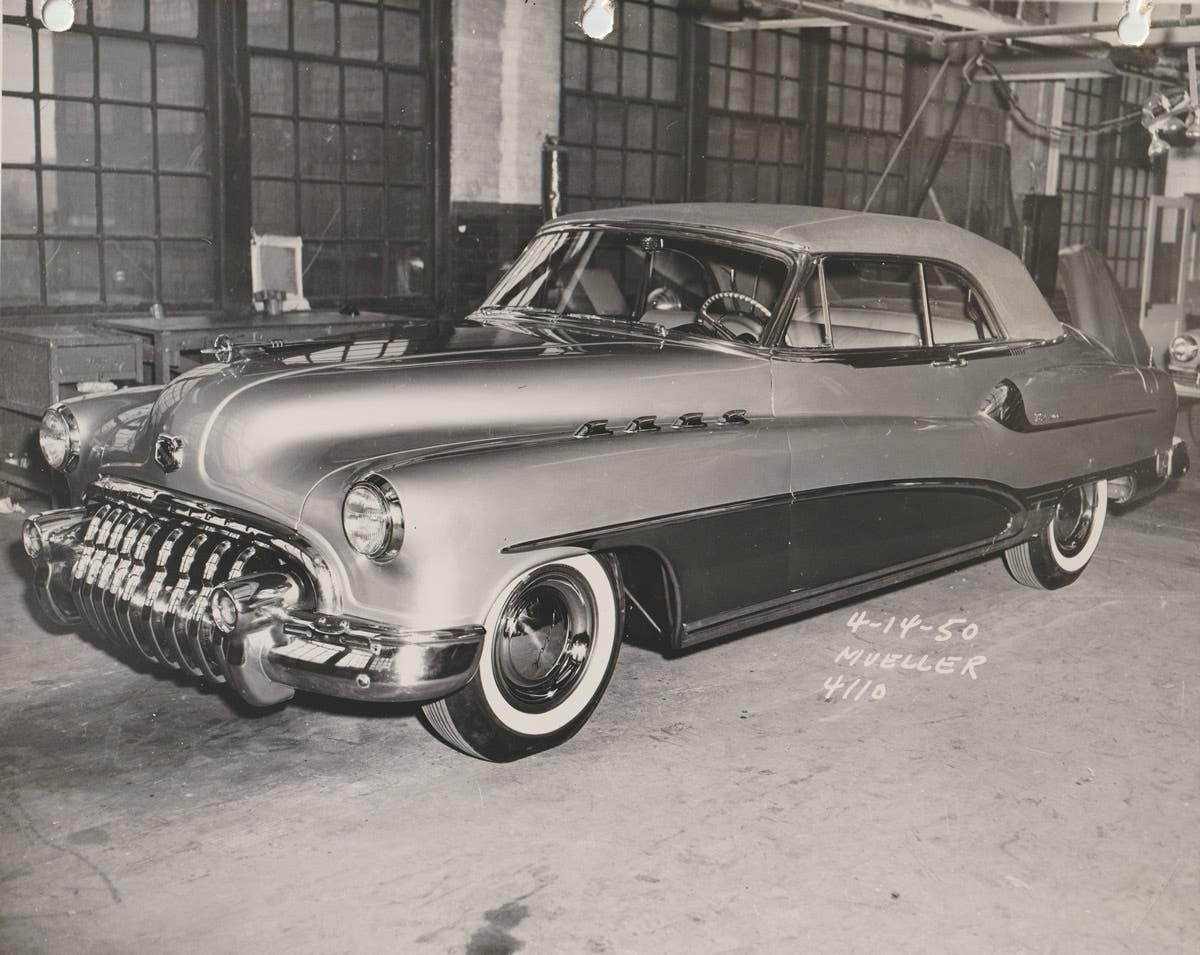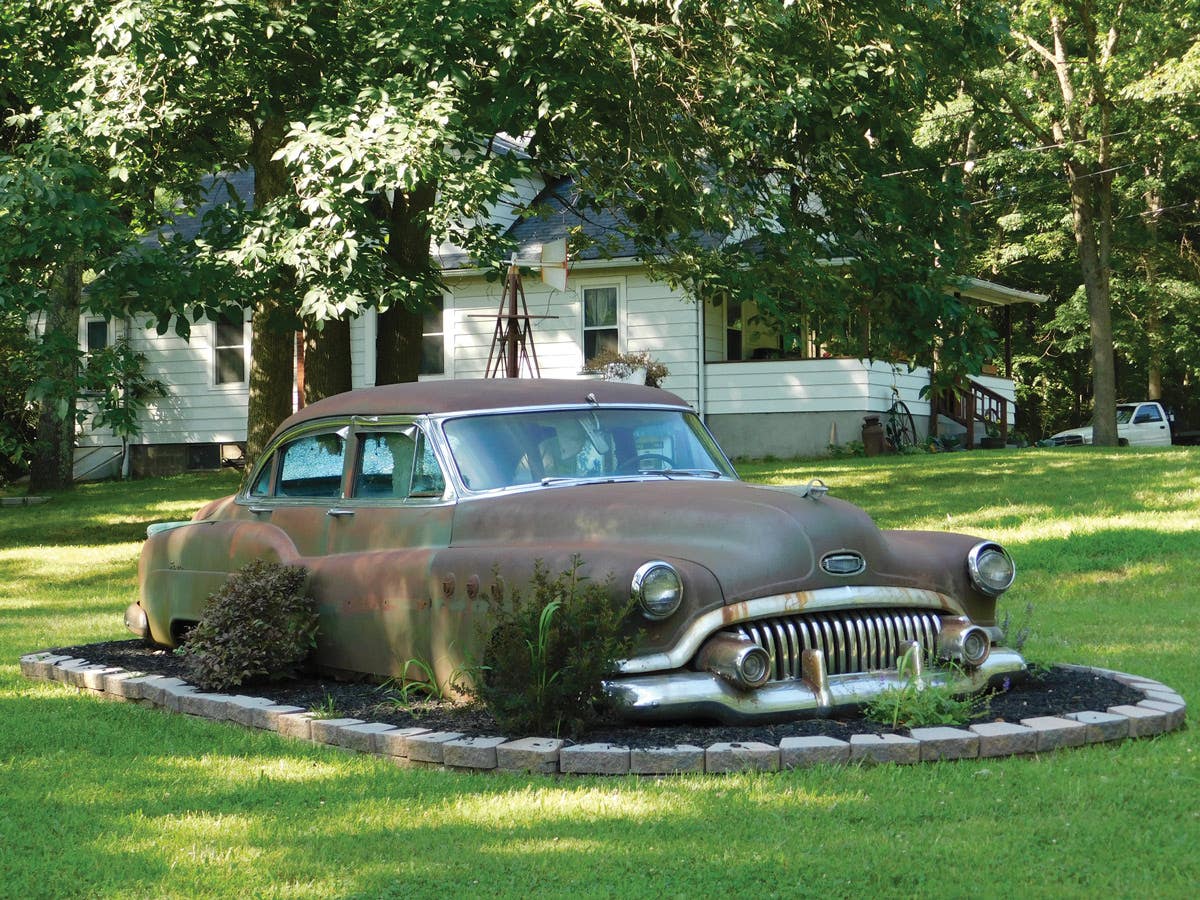Car of the Week: 1952 Chevrolet 1-ton panel truck
Tim Blum is a truck restorer from Baraboo, Wis. He normally makes older heavy trucks look new again, but he and his sons Matt and Josh decided to do the same to a 1952 Chevrolet 1-ton panel that Tim originally had only $500 in.
By John Gunnell
An all-new, completely redesigned line of Chevrolet trucks started production on May 1, 1947. The new trucks featured “the cab that breathes” with 30 “Advance Design” features and a front-opening alligator jaw hood that made engine servicing an easier job.
The light trucks came in 3100 (1/2-ton), 3600 (3/4-ton) and 3800 (1-ton) series. The 1-ton line included a large panel truck with prices starting at $1,445 and a standard weight of 4,220 lbs. This large panel had a 137-inch wheelbase and an overall length of 223.88 inches.
The 1947 Chevy 1-tons were ES models. The next year this changed to FS and the price climbed to $1,596, but there were few other changes. Each year the first letter in the model designation changed and the price jumped slightly So the GS model was the 1948 version, the 1950 was the HS, the 1951 was the JS (IS was skipped because the letter I looked like the number 1).
That brings us to the KS model of 1952, which is where Tim Blum’s truck fits in. Blum is a truck restorer from Baraboo, Wis. He normally makes older heavy trucks look new again, but he and his sons Matt and Josh decided to do the same to a 1952 Chevrolet 1-ton panel that Tim originally had only $500 in.
“I bought it 32 years ago,” Blum told Old Cars Weekly. “Baraboo Asphalt Co. had purchased it from the W. R. DuBois & Son construction company down here. They had it in their boneyard and it was rotted out. They had put a generator in the back of it and they had flood lights up and down both sides of the roof and both sides of the body. When they rolled it on the crushers at night, the truck was their light plant. They lit up the whole quarry like that.”
Blum bought the truck and Baraboo Asphalt Co. kept the generator, which they took out of it. Then, it took Blum and his boys about 10 years to get the truck back to its present condition. “It’s not a show vehicle,” Blum admitted. “It’s just a nice daily driver and I have a lot of fun with it. “
Under the hood, the truck has a 235-cid Chevrolet “Stovebolt” six replacing the original 216-cid six. “The 235 didn’t come out until 1953,” Blum pointed out. “So, at one point somebody changed it, but I’ve got no complaints because it goes down the road really nice and we have fun with it. The truck still has the three-piece rims and 17-inch tires.”
Blum agreed that you don’t see many of the 1-ton panels. “As near as I can figure it, this one originally came from either J.R. Hahn in Baraboo or Baraboo Sysco Food had two of them. So, I can’t tell you which it was, but I can tell you it originally came from Baraboo where it was used as a delivery vehicle.”
Blum says the truck was “just always different and I liked it.” He says the body work on the trucks is “a little bit friendly because waves at you.” The truck will drive down the road comfortably at 65 mph, but 70 mph is pushing it a little bit. Blum and his sons tried to decide what color to paint it by driving around to car lots and check out vehicles for sale. They wound up selecting a 1993 GM green and gray color combination.
The external sun visor — a factory accessory — was purchased from a man in Reedsburg, Wis. Blum said that a lot of parts were picked up in junkyards. “It was fairly easy to get a lot of the front-end parts from Jim Carter truck parts in Kansas,” he said. “But for the back parts — the fenders and running boards and so on — nobody remade them. When Accessoryland was in Dubuque, Iowa, I got quite a few parts from them.”
As far as can be determined, production totals for 1952 Chevrolet 1-ton panel trucks are unavailable. However, they are probably out there on some report, since the production totals for 1950 models have been found and are on the Internet. The 1950 Chevrolet 1-ton panel had a production run of 7,701 units.
Advance-Design trucks were marketed from 1947 until the first part of 1956. In those nine years, 1950 saw the largest total production of Chevrolet trucks. Total calendar year production for the eight-year period looked like this:
1947 335,343
1948 389,690
1949 383,543
1950 494,573
1951 426,115
1952 332,115
1953 361,833
1954 325,515
1955 393,312 (only early ‘55 trucks were Advance-Design models)
It is fairly safe to assume that the 1950 total of 7,701 of the large panels was probably the high point of production of that model. That year was a record year for United States car and truck production as a whole. During the 1951-'53 period, production restrictions brought about by the Korean War held production down. By 1954-'55, these trucks were getting old-fashioned and not selling as well as they had at the beginning of the series.
A little math tells us that the production total for 1952 was about 67.15 percent of the total for 1950. Extrapolating from the numbers for the 1-ton panel suggests that about 5,171 of these trucks were made in 1952. That’s just a guess — but it’s an educated guess. Chevy may have sold a few less or a few more fleets of 1-ton panels in 1952, but chances are we have a pretty good estimate at 5,171. This may explain why Tim Blum hasn’t seen many others.
In addition to being fairly rare, the 1-ton trucks were rugged machines. They had a four-speed manual transmission with floor shift, a full-floating rear axle, multi-piece spilt wheel rims, heavy-duty underpinnings, a standard 5.14:1 rear axle and beefy 17-inch tires. The GVW rating was 7,000 lbs. with single rear wheels and 6-ply tires and 7,700 lbs. with optional 8-ply tires.
To Tim Blum, his rugged and rare Chevy panel is a mini truck, since he’s used to restoring giant semis for friends like collector H.E. “Gene” Olson. “We have a lot of fun with this one,” he stressed. “It drives really nice at highway speeds and we enjoy taking it up the road a-ways, then turning around and heading back home. It’s a hard-riding old Chevy and we don’t see many others, although we have seen a couple of car magazines with similar trucks that they were even using to pull a trailer.” We couldn’t help thinking that Tim was talking about a certain ex-Old Cars Weekly truck that’s known as "Buck."







